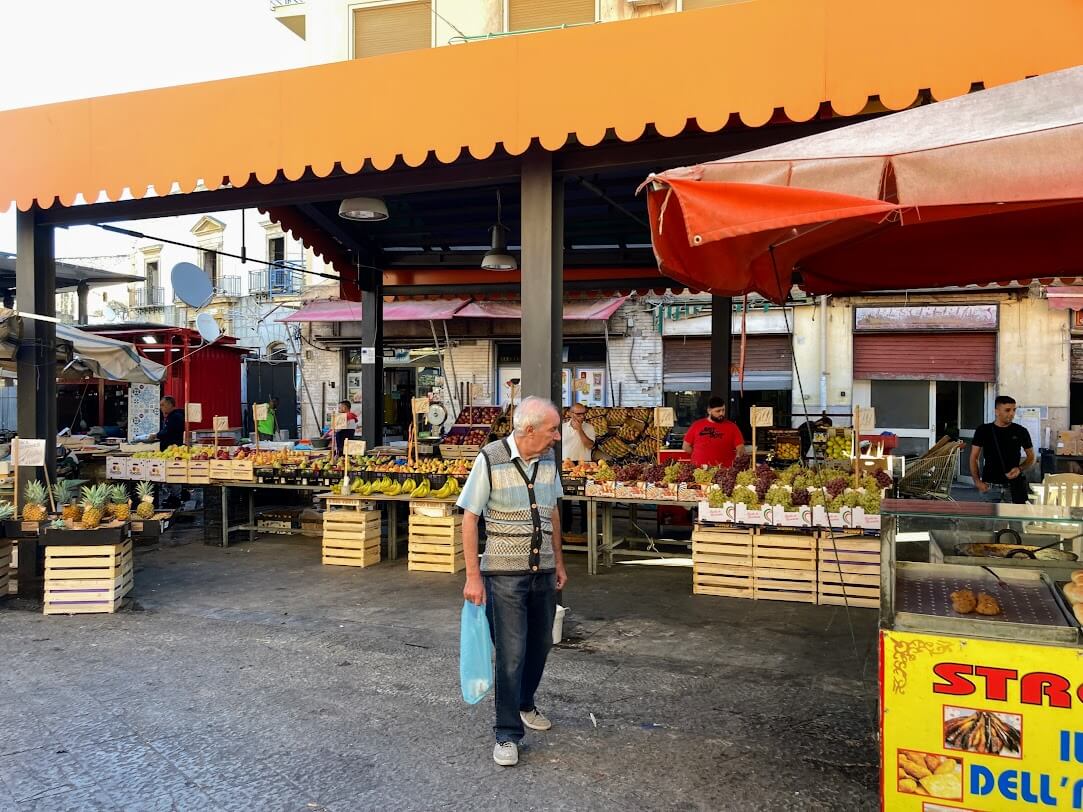- Home
- Sicilian Food
- Marsala Wine
The Charm of Marsala Wine: A Journey into its Rich Flavors and Timeless Elegance
Indulge in a sensory voyage of discovery as we uncover the magic and allure of Marsala wine. With its rich history and distinctive flavors, Marsala is a drink to be savored.
In this article, we invite you to journey deep into the heart of this ancient Italian fortified wine.
Marsala boasts a centuries-long legacy. Produced in the vicinity of the Sicilian city of Marsala, this velvety nectar has captured the hearts of wine connoisseurs around the globe.
What Is Marsala Wine?
Marsala was the first Italian DOC-labeled wine. It has the state seal and can only be produced in the Marsala region.
Marsala wine is a blend with 15-20% alcohol. The grapes used in making it are typically Inzolia, Catarratto, Grillo, and Damaschino. These grapes are harvested and then left to dry in the sun, a process known as 'passito ', which concentrates their sugars and flavors. The juice is then fermented and fortified with grape brandy, giving Marsala its unique taste and high alcohol content.
Despite its high quality, Marsala is surprisingly affordable, with even the best wines costing around 40 dollars. This accessibility allows wine enthusiasts, culinary students, and home cooks to explore the world of Marsala without financial constraints.
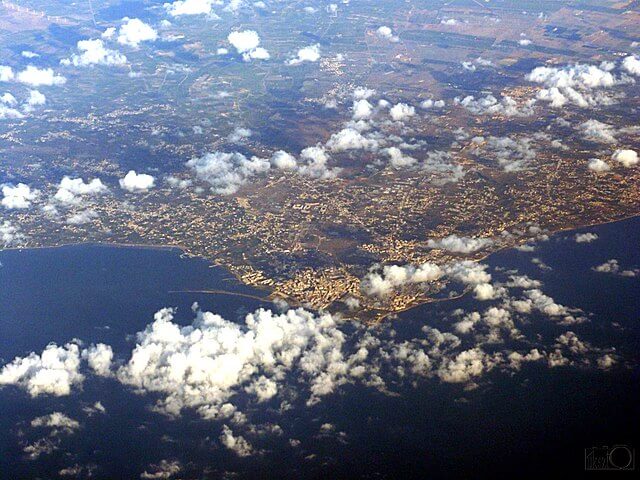 The city of Marsala, seen from the air. (Wikimedia Commons)
The city of Marsala, seen from the air. (Wikimedia Commons)The taste of Marsala wine can be described as a spectrum, ranging from dry to very sweet. With its rich and complex flavor profile, the sweet Marsala is the most popular among wine enthusiasts. It offers a unique blend of nutty, caramel, and dried fruit flavors, with a hint of oak from the aging process, making it a delightful choice for both sipping and cooking.
With its unique flavor, Marsala is not just for sipping. It's also a fantastic ingredient for cooking, adding depth and richness to dishes like Chicken Marsala and Tiramisu Cake. This versatility opens up a world of culinary possibilities, inspiring home cooks and culinary students to experiment with their dishes.
Marsala is reminiscent of Madeira wine. For a more complete comparison between the two, see here.
The taste of Marsala derives not only from the local Sicilian grapes but also from the brandy. If you want to substitute Madeira for Marsala in your cooking, you can mix in a splash of brandy.
Or at least you can try.
There's genuinely no substitute for the lush, rich flavor of Marsala. Its unique taste, derived from the local Sicilian grapes and brandy, is something to be appreciated and savored. This distinctive taste will intrigue wine enthusiasts and culinary students, sparking their curiosity to experience Marsala for themselves.
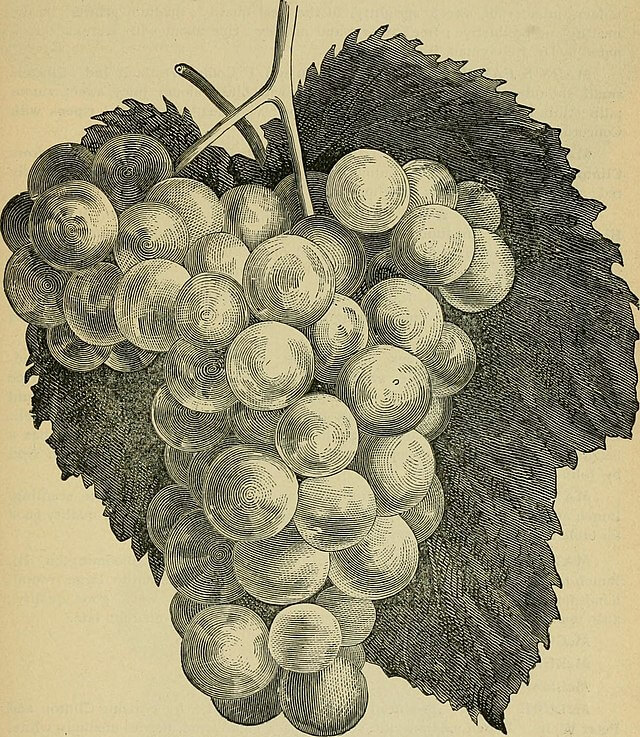
Marsala goes well, for example, with asparagus, Brussels sprouts, and chocolate.
When opened, Marsala can stay tasty for up to six months. To ensure its shelf life, it should be kept in the fridge.
History of Marsala Wine
The story of Marsala wine is steeped in history, dating back to 1773 when British cloth merchant John Woodhouse discovered the 'vino perpetuo' in Sicily, a wine aged in barrels for decades.
While in Sicily, Woodhouse fell in love with a local wine called 'vino perpetuo'—the everlasting wine. This wine was aged in barrels for decades, and new wine was added to replace the old.
Woodhouse found the product marketable and began to plan it as a competitor to the Portuguese Madeira wine.
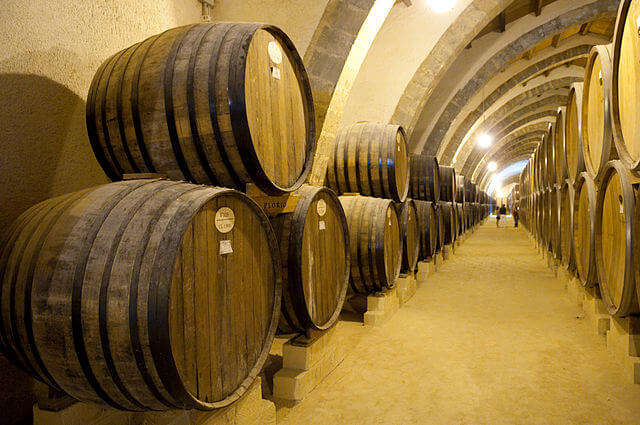 Wine barrels in Florio winery.
Wine barrels in Florio winery.Woodhouse added brandy to the barrels to prevent the wine from spoiling during the sea voyage. This gave Marsala wine its distinct taste and made it an instant hit.
Madeira wine was hugely popular at the time. It was used by the English Navy, among others. When Madeira became scarce, Woodhouse made a contract with the Navy.
And so Woodhouse began supplying fortified Marsala to the English Navy. Because of this, the production of Marsala wine became a big business in Sicily.
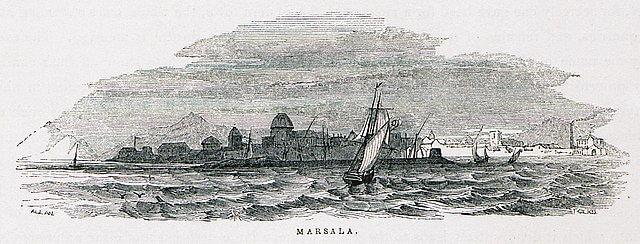
Soon, many other English families began doing business with Marsala, creating strong trade links between England and Sicily.
Among the families was the Whitakers. They bought the island of Mozia in western Sicily, near Marsala. Before them, the island had been home to Carthaginians, among others.
The island is now open to visitors. Visitors can admire the ancient ruins and learn about the Whitaker family.
It is also a fine place to enjoy nature, the outdoors, and walking.
Different Types of Marsala Wine
Marsala is available in three colors: amber, ruby, and gold. Each color has its distinct flavor.
Amber-colored Marsala (ambro) has an added sweetener. Ruby-colored Marsala (rubino) is made from red grapes, while gold-colored Marsala (oro) comes from white grapes.
Sweet Marsala is best known, but dry and semi-dry varieties are also available.
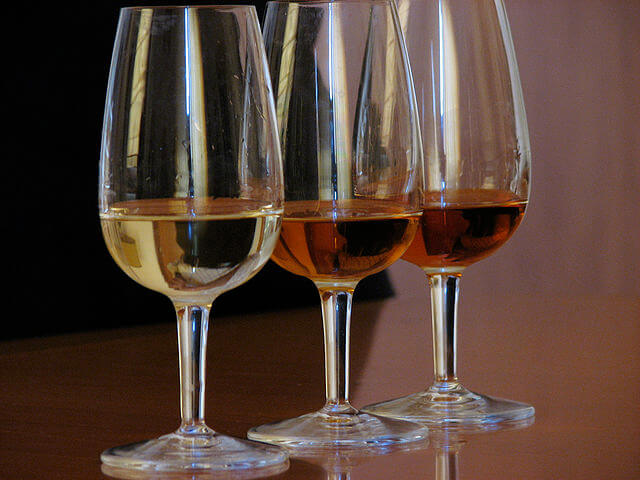
Marsala comes in four different quality categories. The categories depend on how long the wine has matured.
'Fine' is the cheapest grade. It has matured for at least a year and is ideal for cooking. 'Superiore' is a step up. It has aged for at least two years.
Then come 'Superiore Riserva' (4 years), 'Vergine/Soleras' (5 years), and 'Vergine/Soleras Riserva' (10 years). The 'Vergine/Soleras Stravecchio' is also aged for at least ten years.
Well-known Marsala brands include Taylor and Florio.
Taylor's Marsala wines are golden, full-bodied, and fruity. They are suitable for more sophisticated cooking or sips straight from the glass.
Florio wines date back almost two centuries. The family is also known from the book and TV series The Lions of Sicily. If you are in Marsla, you can book a tour of their winery.
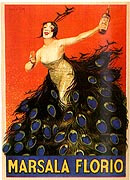
Cooking with Marsala Wine
When it comes to cooking, the 'Fine' grade of Marsala wine, which is more affordable, is a great choice. On the other hand, the sweeter and drier varieties of Marsala are better suited for pastries and main courses, respectively.
The most famous dessert that uses Marsala wine is tiramisu. But there are also many other desserts that you can flavor with Marsala.

The most famous main course is Chicken Marsala. It is an American-Italian recipe that uses Marsala sauce to flavor chicken and mushrooms.
For something lighter, try the creamy Marsala pasta sauce.
And, of course, you can make cocktails with it. Marsala goes well with whisky, gin, orange juice, and even tomato juice!
How Long Does Marsala Wine Last in the Fridge?
When not opened, Marsala wine can be stored for years. If opened, it lasts in the fridge for up to months.
For more information on how to store Marsala wine, check this link. You'll find advice on keeping your Marsala wine as good as possible there.
Conclusion
In conclusion, Marsala wine is a unique and versatile product that has been a commercial success for centuries. Its distinct flavor, reminiscent of Madeira wine but with its distinctive qualities, makes it a popular choice for cooking, baking, and enjoying on its own or in cocktails.
Marsala wine is a versatile ingredient that can enhance a wide range of dishes. Whether cooking a savory main course like Chicken Marsala, adding a unique twist to a dessert like tiramisu, or creating a flavorful pasta sauce, Marsala can elevate your culinary creations.
For cooking, it is best to go for the cheapest brands. To enjoy it as such, you should buy the longer-aged varieties.
So, whether you are a seasoned wine enthusiast or a curious novice, prepare to be enchanted by the captivating allure of Marsala wine. Uncork a bottle and embark on an unforgettable journey through its rich flavors and timeless elegance.
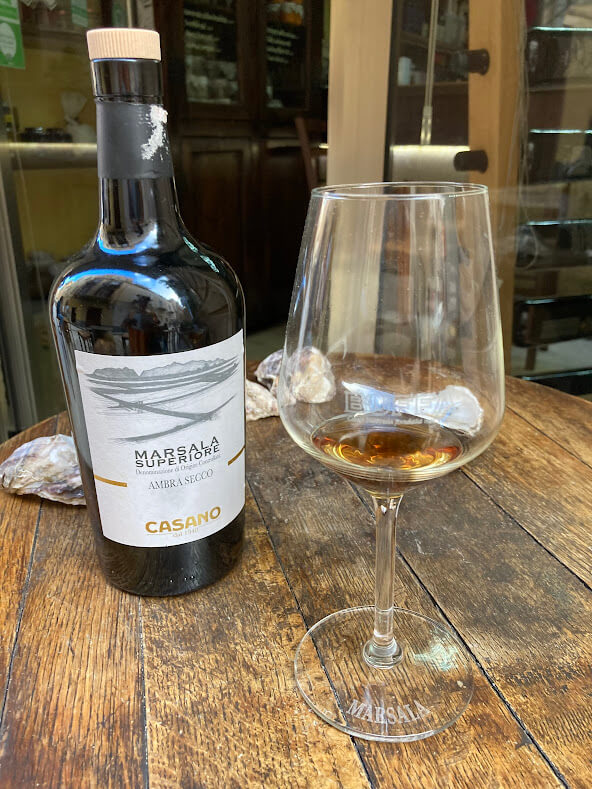
Related:
Difference Between Madeira and Marsala Wines
How Long Does Marsala Wine Last in the Fridge?
(This page last edited January 20, 2025)
Recent Articles
-
Sicilian Food - Rich Flavors, Endless Passion
Apr 09, 25 09:54 AM
All you need to know about Sicilian food, its ingredients and history. -
Things to Do in Palermo - Tips for a Perfect Holiday
Apr 05, 25 04:27 AM
Things to Do in Palermo - From historic landmarks to delicious food, this guide has it all. -
The Story of Tommaso Buscetta: From Mafia Boss to Key Witness
Mar 30, 25 05:12 AM
Tommaso Buscetta built Sicilian Mafia into a global empire - which he then destroyed.
Follow MANY FACES OF SICILY on Facebook, Instagram, Bluesky & Pinterest
Contact: vesa@manyfacesofsicily.com
